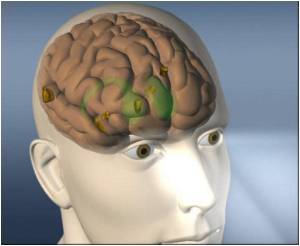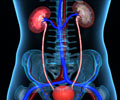US scientists have identified a key gene behind aggressive childhood brain tumour. Now clinical trials are on drugs that target the gene.

Investigators checked tumor samples from 78 young patients at 500,000 different spots in the genome for additions or deletions of genetic material. Researchers also tracked gene activity in 53 of the tumor samples and compared the results with data from adult tumors.
Patients were battling HGGs, which are aggressive tumors that arise from cells called glial cells in the brain and spine. In the U.S., HGGs are diagnosed in 400 to 550 children and adolescents each year and account for 15 to 20 percent of all childhood brain tumors. Long-term survival for these patients remains no better than 30 percent. Technological advances mean it is now possible to study in detail the genetic missteps driving this disease, Baker said.
Twelve percent of tumors in this study had extra copies of the gene PDGFRA. Researchers reported similar gene-expression patterns associated with high levels of PDGFRA were also found in childhood tumors without extra copies of the gene. Extra copies of PDGFRA were even more common in tumors from children who had received brain irradiation for treatment of earlier cancers. The study included 10 such patients, half of whom carried extra copies of PDGFRA. Baker said these findings suggest the PDGFR pathway plays a key role in childhood HGG. The PDGFRA gene carries instructions for making a protein found on the cell surface that is part of a pathway that helps control cell growth, proliferation and survival. Those processes are improperly regulated in cancer.
Along with excess amounts of PDGFRA, researchers reported tumors from young HGG patients were also more likely than adult tumors to carry an extra copy of the long arm of chromosome 1. Genes are organized into 23 pairs of chromosomes, which are found in nearly every cell in the body.
Nearly 30 percent of pediatric HGGs carried the addition, compared with 9 percent of adult tumors. The extra piece of chromosome 1 was found in seven of the 10 patients who had received prior radiation therapy.
Advertisement
A different gene, EGFR, takes center stage in adult tumors. The broad survey has thus helped obtain a complete and unbiased comparison of the genetic imbalances in childhood and adult HGG.
Advertisement
"The results tell us that if we want to effectively design innovative new therapies, we need to understand the genetics in childhood tumors in the same depth that we are learning about the adult tumors," Baker said.
Suzanne Baker is also an associate member of the St. Jude Department of Developmental Neurobiology. St. Jude opened a Phase I safety study in October 2009 that combines radiation therapy with drugs targeting both PDGFRA and EGFR. The focus is patients with a type of HGG called diffuse intrinsic pontine glioma (DIPG). With current treatment, 50 to 75 percent of patients die within one year of diagnosis. Dasatinib, which targets PDGFRA, is one of the drugs being studied. Dasatinib is already approved for treating chronic myelogenous leukemia in adults.
Tumor samples for this study were collected before treatment began at St. Jude and at medical centers through the United Kingdom Childhood Cancer and Leukemia Group.
The research has been published in the May 17 online edition of the Journal of Clinical Oncology.
Source-Medindia
GPL











